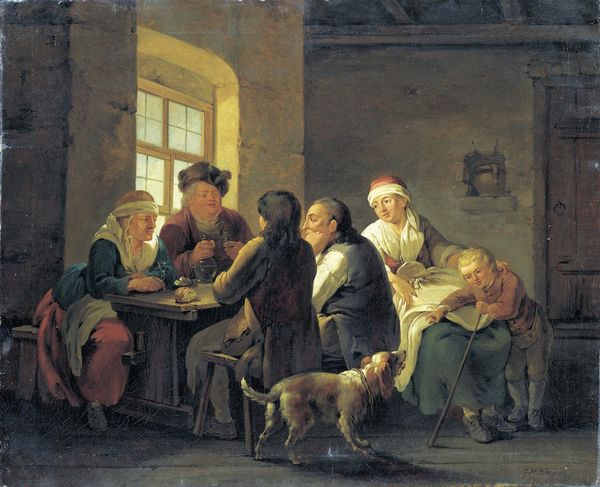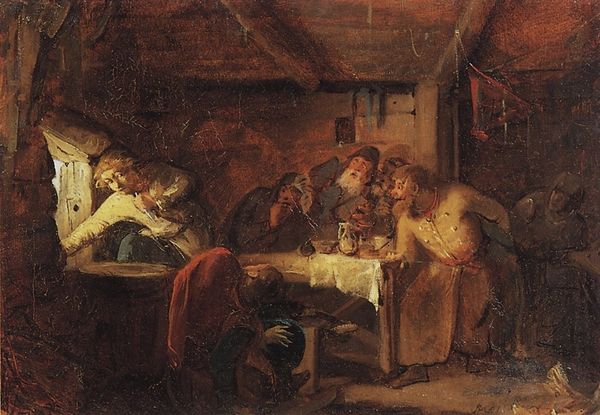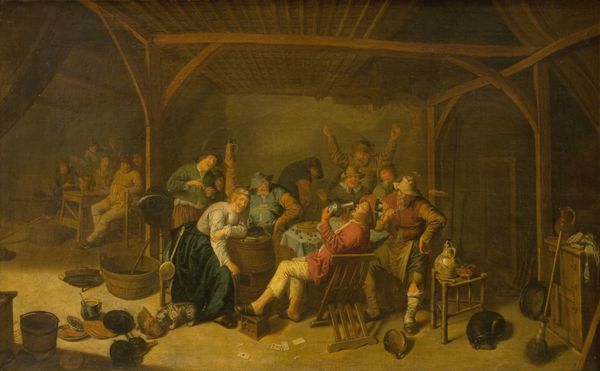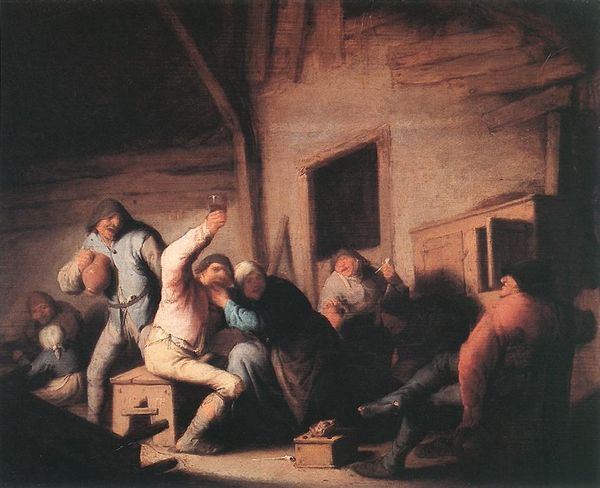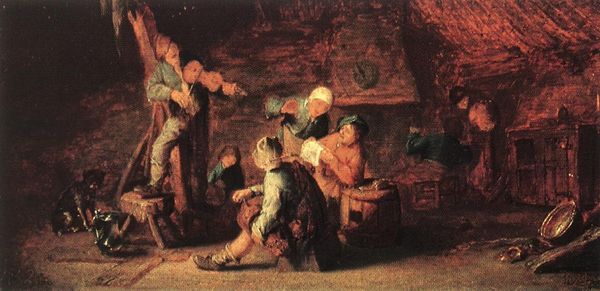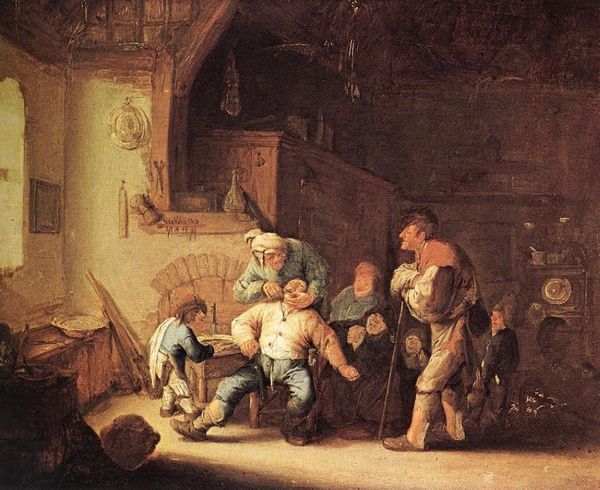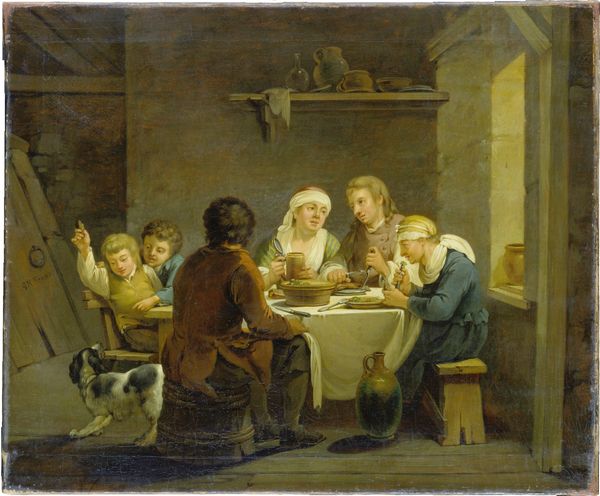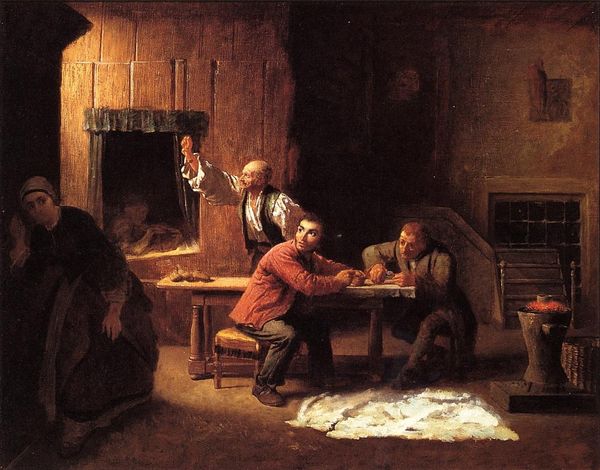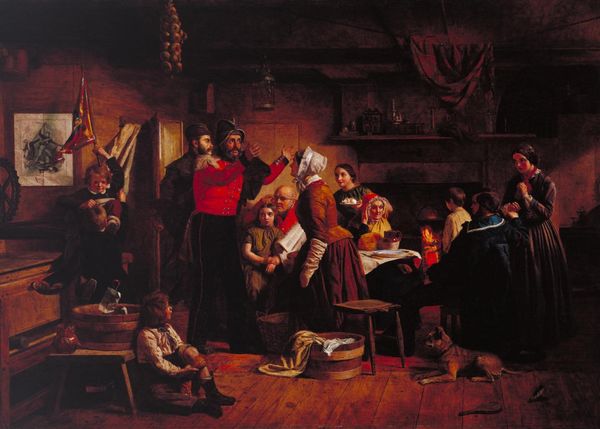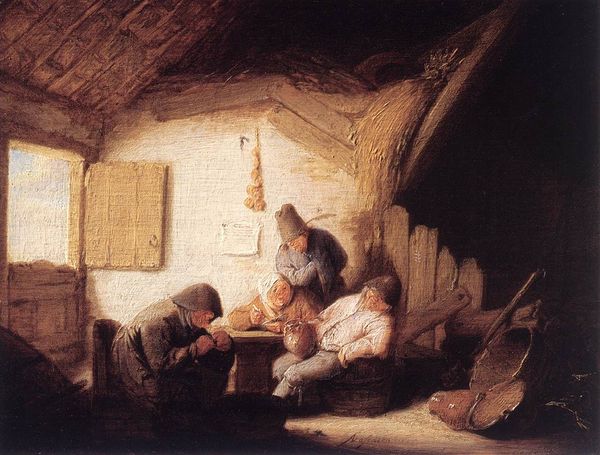
Copyright: Public domain
Ferdinand Georg Waldmüller's painting, Palm Sunday, presents a tableau of figures gathered in a humble interior, their gazes directed upwards. The earthy tones, rendered with meticulous detail, create an atmosphere of quiet anticipation. Consider how the composition is structured around the lines of sight. The upward focus of the characters directs us toward the ceiling, where a man affixes a palm branch. Waldmüller uses this directional cue to explore themes of attention and expectation. The semiotic system at play here involves the cultural code of religious observance. The palm branch acts as a signifier of Palm Sunday, infusing the scene with religious meaning. Yet, Waldmüller’s interest lies in the everyday ritual, capturing a moment of shared experience rather than overt piety. This focus on the ordinary invests the scene with an almost structuralist emphasis on social patterns. Waldmüller doesn’t merely represent a religious event; he offers a study of human perception. The collective gaze becomes a focal point, inviting us to consider how shared attention shapes individual and communal experience.
Comments
No comments
Be the first to comment and join the conversation on the ultimate creative platform.
